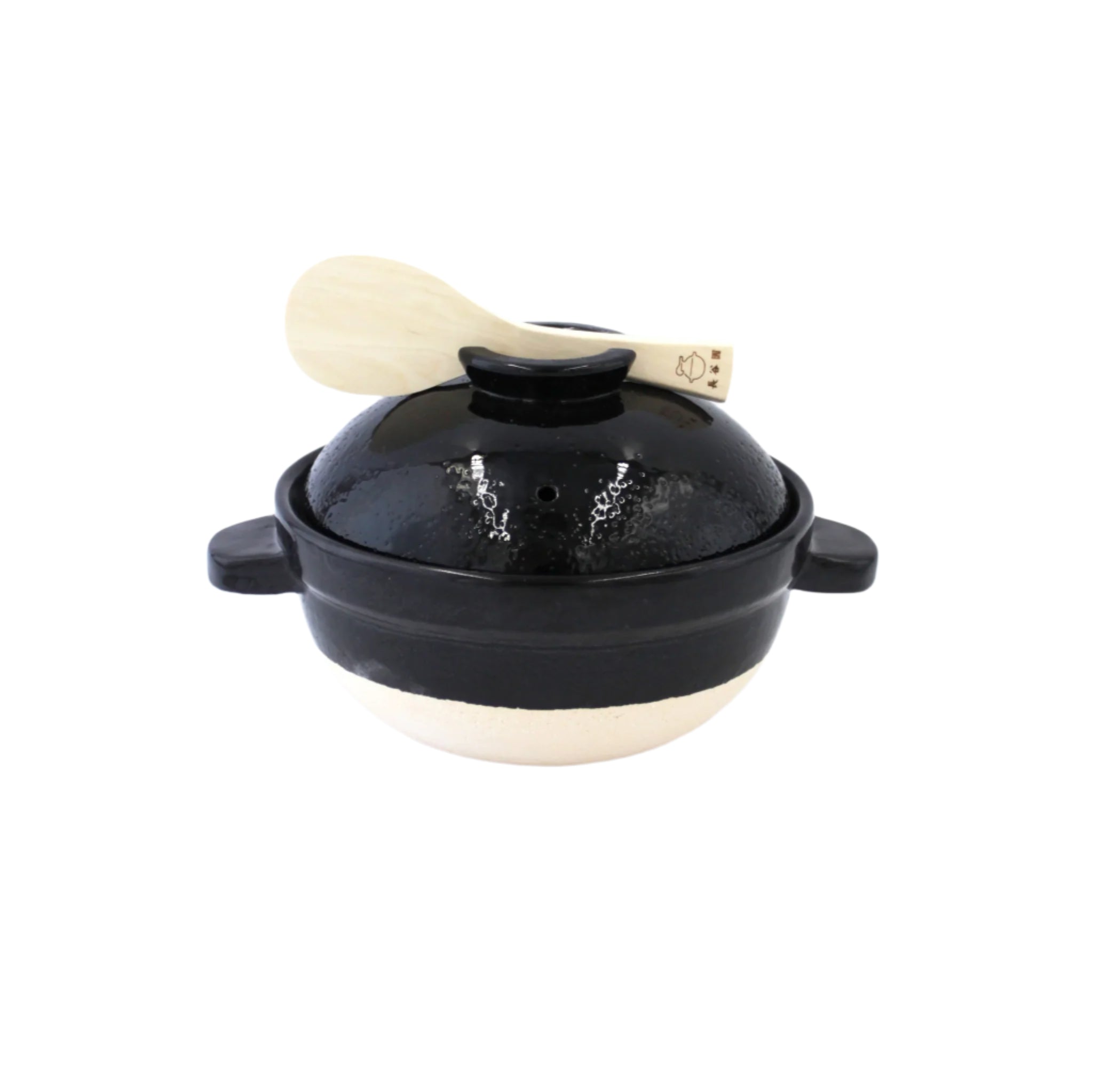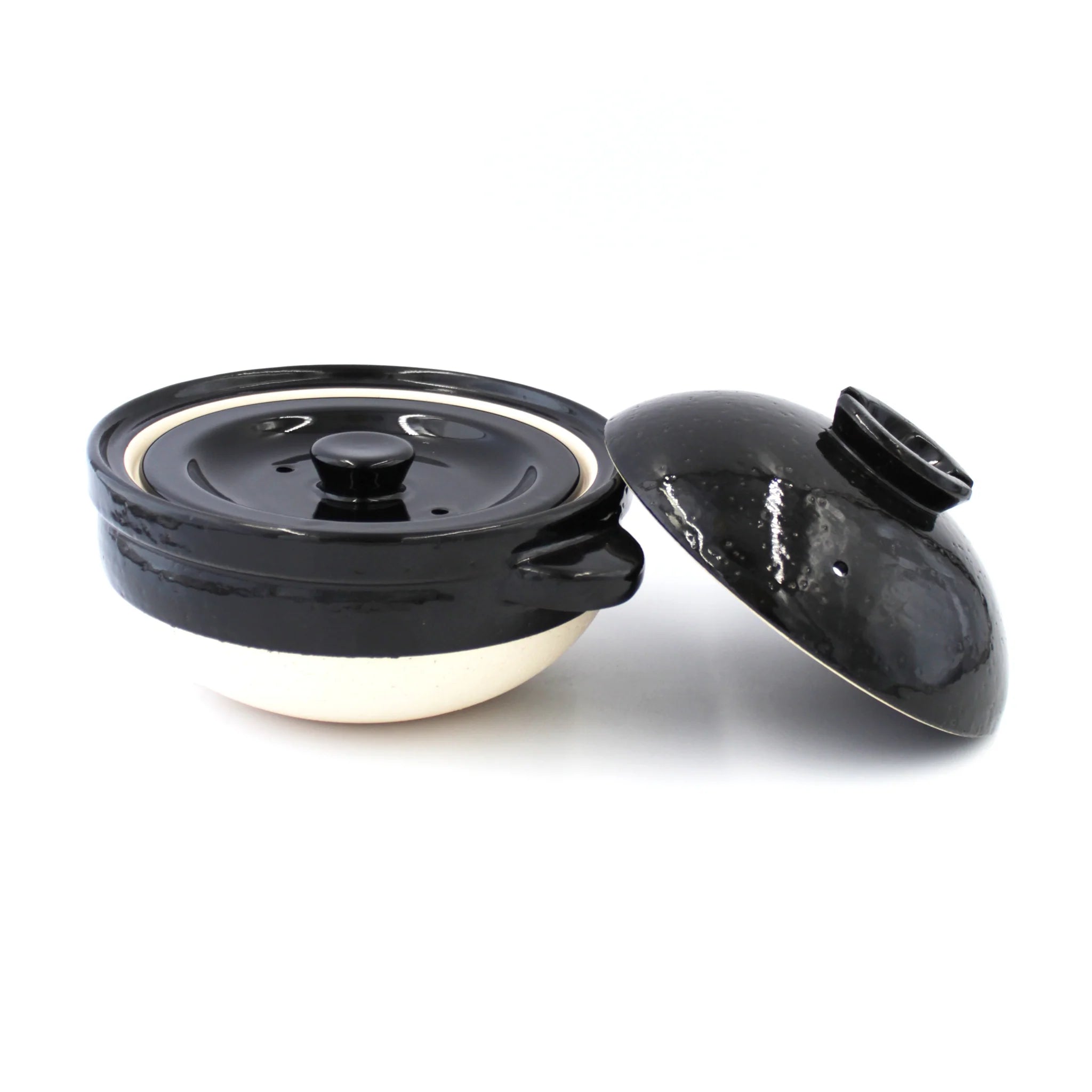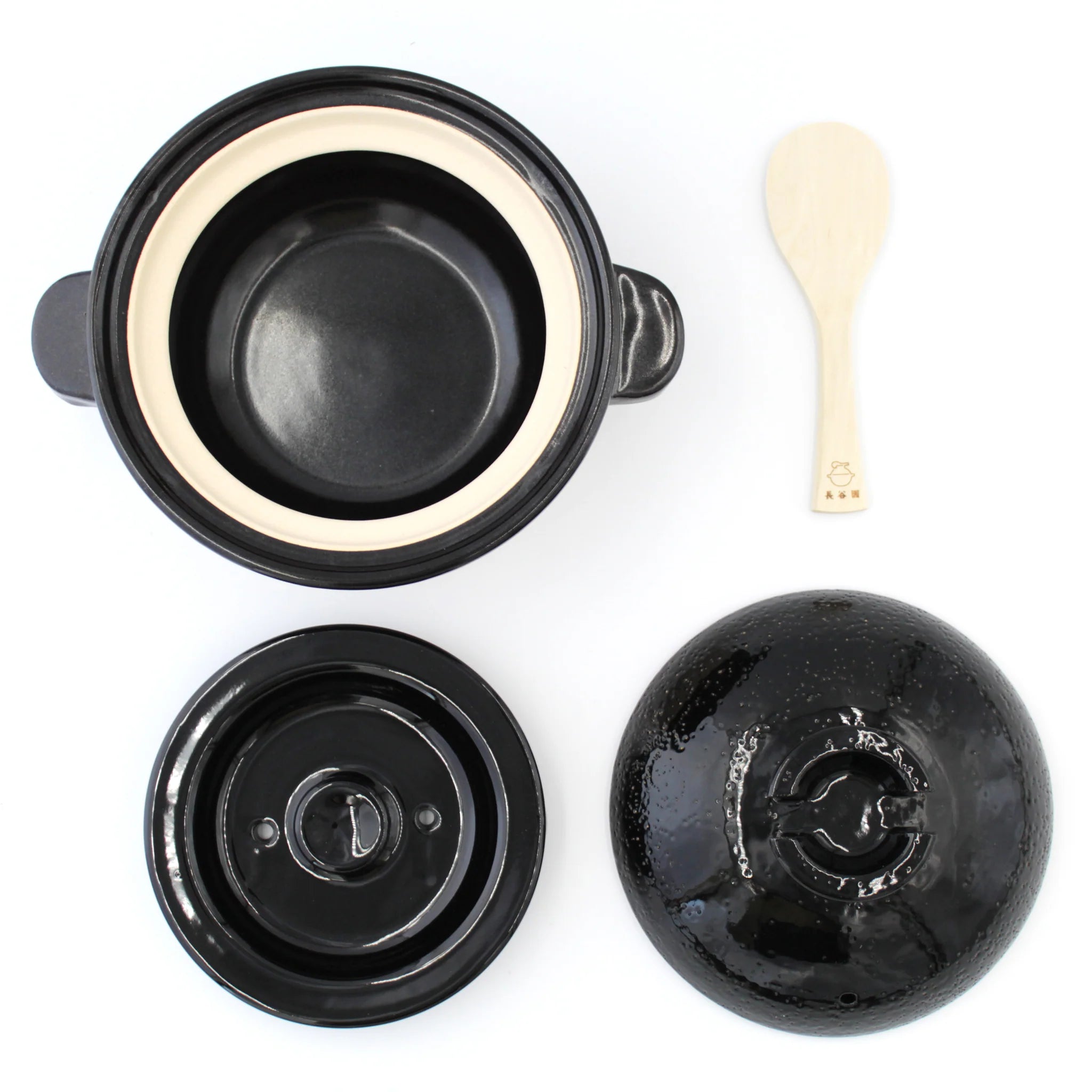


Rice cooker 2/4 people

The shipment is made from the center of France, you will receive your order in a few days. A tracking link will be sent to you as soon as it is shipped to track your package in real time.
No need to worry about shipping costs anymore, as soon as your cart reaches this amount, we take care of the delivery, wherever you are in Europe.
If your order has a problem, don't worry, we are here to help you. Contact us through our contact page by attaching photos of the product, and we will take care of finding the best solution for you.
KAMADOSAN 2 GO
Rice cooker made by NAGATANEN, designed to satisfy professionals and serious enthusiasts. It has indeed been developed to recreate the taste of rice traditionally cooked in a "donabe". This taste and texture of well-fluffed and shiny rice, forgotten since the arrival of the very convenient electric rice cooker...
The Iga clay, called "the breathing clay," allows for a gentle rise in temperature and good heat retention, but in a traditional "donabe," this cooking requires constant monitoring to prevent the water from boiling over. The "Kamadosan" is the result of more than 3 years of research to avoid this delicate supervision. It combines this Iga clay with a glazing, it is thicker than other donabe for better cooking quality, and it has a double lid system with a number of cleverly placed holes.
The heat penetrates the heart of the rice grain while retaining moisture. This way, you will get, at home, this shiny and well-fluffed rice that you will gladly bring to the table. A joy to share with family and loved ones!
Wonderful durability
Donabe d'Iga is also known for its great durability. With your care, Kamado-san can last a long time. This will only add a more pleasant character to it.
Best seller Donabe
In Japan, this donabe rice cooker, Kamado-san, has been the best-selling donabe at Nagatani-en since its introduction in 2000. This donabe is not only very popular at home but is also highly sought after by restaurants keen to serve top-quality rice to customers. Some restaurants offer individual donabe rice service at the table.
Awarded the Good Design Award from Japan.
This Donabe rice cooker, Kamado-san, is not only ideal as an everyday cooking tool but also makes a beautiful presentation at the table.
THE MANUFACTURER AND THE EARTH IGA
- Cooker supplied with its trivet and wooden spatula
- Fire: Gas only
- Capacity: 2 GB (360g uncooked rice)
- Material: Iga clay and enamel
- Dimensions: diameter 21.5 cm (excluding handles) total height 15 cm
- Made in Iga, Japan
- Weight: 2.9kg
THE MANUFACTURER AND THE EARTH IGA
Nagatanien, founded in 1832, is the most important kiln of Iga-yaki (traditional Japanese pottery dating back to the 7th century). Their wish is to continue keeping Japanese culinary art alive by adapting to today's lifestyle. Their donabe is a best seller that has received the Good Design Awards in Japan.
Historically, the Iga region was a lakebed. Its very particular soil is thus composed of very ancient seabeds that create air bubbles during cooking. It is these air bubbles that allow the Iga soil to breathe and retain heat better than any other soil. Moreover, this soil withstands very high temperatures; that is why the donabe can be placed directly on the flame without cracking.
USE & MAINTENANCE
- Do not leave uneaten rice
- Do not soak in water
- Wash with water and dish soap
- Do not put in the dishwasher
- Dry well inside out so that the bottom dries properly (risk of mold)
- Do not cool abruptly by placing the hot cooker on a cold surface or by running it under cold water (risk of cracks)
- Handle with oven mitts while the cooker is hot
- Never place on a flammable surface
- Do not use for frying (since the clay is porous, the oil could drip onto the fire)
Your donabe develops its character as it ages
As you use your donabe, it develops character, and that's something to be proud of.
Very fine cracks may appear on the surface (enamel) of the donabe. This is called "kannyu" in Japanese, and the cracks resemble veins. These are naturally developed cracks on the glaze and will not affect the functioning of the donabe.
Once you start using the donabe, the bottom part begins to change color and black spots (like burn marks) may appear. This is also part of the normal development and the donabe can be used safely. However, if the bottom part seems to blacken too quickly, the heat you are using may be too high. In this case, we suggest using the donabe at a lower heat level.
EXAMPLES OF RECIPES
Kamado-san can also be used to prepare soup, stew, or fondue.
Although Kamado-san is specially designed to prepare premium quality rice, this beautiful donabe can also be used for other purposes, such as making soup, stew, or fondue. (You do not need to use the inner lid.)
Cooked rice with chicken
It's a rice dish with chicken and vegetables that you'll want to prepare in the fall. The Japanese ingredients can be replaced with the vegetables of your choice.
For 3 people
- 1 cup of white rice
- 1 cup of glutinous rice
- Water 350 ml
- 200 g of chicken thigh
- Burdock 50g
- 50g of carrots
- 3 shiitake mushrooms (about 50g)
- Mitsuba
- 2 tablespoons of soy sauce
- 2 teaspoons of mirin
- Wash and drain the white rice/glutinous rice (you can wash them at the same time), then soak them in the same amount of water for about 20 minutes.
- Cut the chicken thighs into bite-sized pieces, sprinkle with 2 g of salt, and let rest for about 20 minutes to season. Scrub the burdock skin with a scrubbing brush, cut it in half lengthwise, then slice it thinly on the diagonal. Cut the carrots into strips about 2 cm long. Thinly slice the shiitake mushrooms.
- Put (1) into the "Kamado-san" and mix, then put (2) on top. Set the lid and heat over medium-high heat for 10 to 11 minutes. Turn off the heat and let steam for 20 minutes. *The recommended time to turn off the heat is about 1 to 2 minutes after steam starts to come out from the top lid. *Heating time varies depending on the size of the "Kamado-san". Please refer to the provided recipe book.
- Open the lid, mix well, and add the chopped mitsuba leaves.
How to make "OKAYU"?
The Iga clay has the property of containing many air bubbles that need to be filled before the first use by making the "okayu". This cooking brings out the "glue" of the rice to waterproof the inner wall.
- Wash the donabe well with water, dry it thoroughly, and let it dry well upside down
- Fill with water up to 3/4 and add already cooked rice (about 100g for the Kamadosan 2/3 persons)
- Mix and close the outer lid only. Cook over low heat until boiling. Then slightly move the lid to prevent overflow and let it cook gently.
- Once the okayu is ready, turn off the heat and let it cool for a little over an hour before retrieving the rice. Wash the donabe.
Okayu is eaten with condiments (salted plums...) or by mixing in an egg...

